Menu
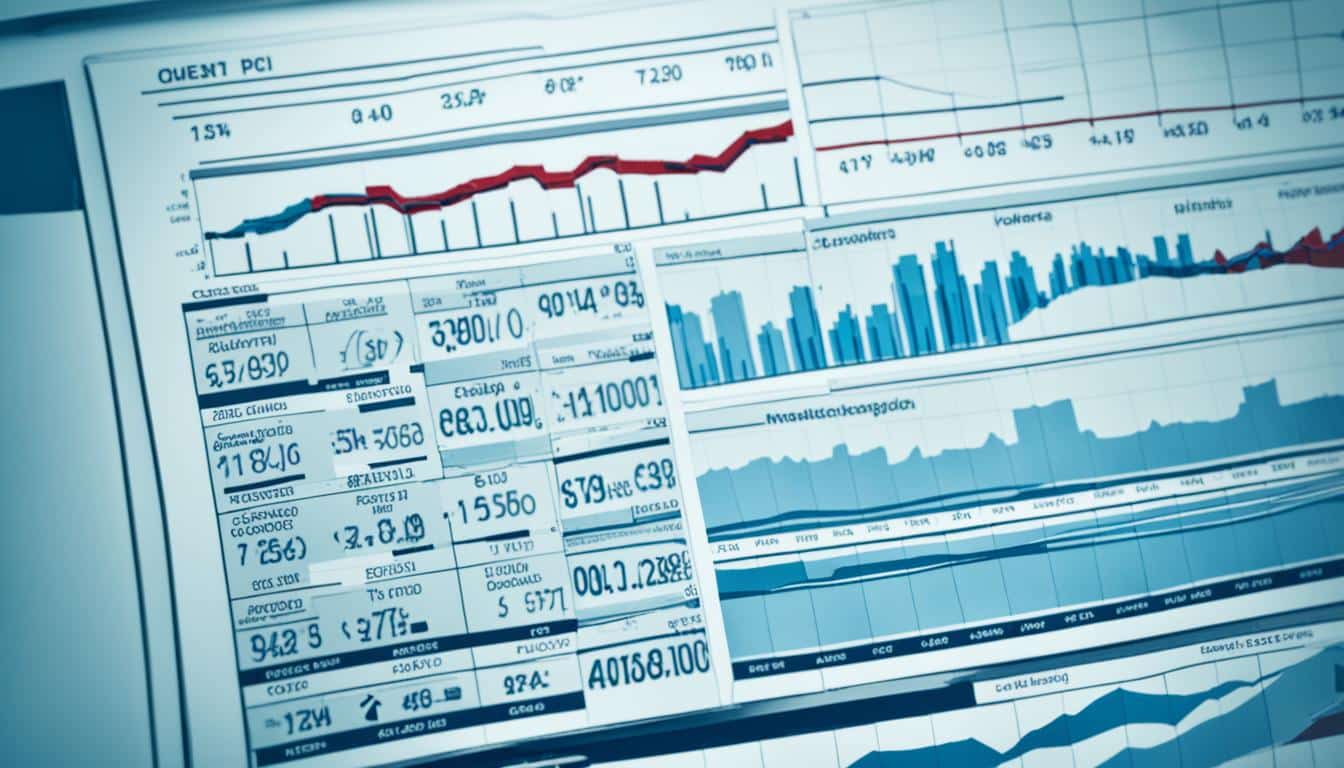
Did you know that AI models can predict Brent crude oil prices with 92% accuracy? This is over a three-month period. It shows the huge impact AI has in knowing future prices. By using past data, global events, and trends, AI gives traders an advantage in this volatile market.
Knowing future prices accurately is very important. It helps in making smart buying choices and knowing when to invest. The Smart Cube uses AI and human thinking to forecast better. This mix aims to give trustworthy, quick insights, improving how companies compete.
Forecasting commodity prices is key in trading. It helps with buying and selling at the right time. This way, businesses can beat economic challenges and stay ahead.
Studies from January 2002 to December 2020 looked at using daily data for price predictions. They found Long Short-Term Memory (LSTM) models really worked well. These models are better than the old ways, like ARIMA, especially in trading livestock and metal commodities.
The financial world’s interest in commodities has grown a lot since 2002. This makes predicting prices very important for investors. Now, AI and special learning systems are major tools in making these predictions. They are better than just using economic models. Experts say that AI models are the best at guessing spot prices.
AI is great for digging into how different factors affect the market. For example, it can look at politics and economy. At the University of Nebraska-Lincoln, there’s a class, AECN 436, that teaches how to do this. It shows students the science and the art behind predicting commodity prices.
Using AI in predicting commodity prices helps businesses make smarter choices. This means they can trade better, with more knowledge. They can more accurately guess where the market’s going and what prices will be.
In the bold world of trading, AI is changing how we look at prices. It studies trends to show what the market might do next. This helps traders plan better.
AI looks at lots of info, like past trends and global events, to guess future prices. It turns all this into advice that traders can use. For example, Vesper helps find secret trends to buy better.
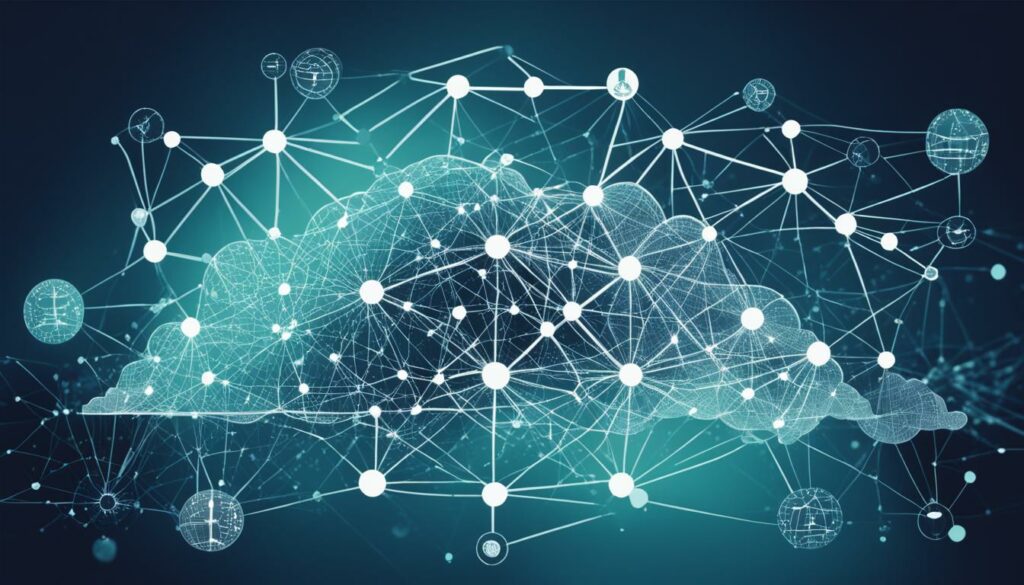
Using AI to guess prices is really useful. It makes buying smarter, saves money, and helps make more profit. It can also plan long-term, making sure there’s always enough stock.
There are great stories about AI helping in trading. One is how it boosts sales by finding the best prices in travel and retail. Traders love tools like Vesper as they make the unpredictable market easier to manage.
| Industry | AI Utilisation | Benefits |
|---|---|---|
| Travel | RNN for price prediction | Enhanced pricing strategies for airlines and hotels |
| Retail | AI price prediction models | Competitive pricing, customer satisfaction forecasting |
| Commodity Trading | Platforms like Vesper | Strategic planning, improved decision-making |
To be a successful trader, it’s key to know what affects commodity prices. Market prices are mainly shaped by global economic trends, weather events, and the balance of supply and demand. These elements work together to create the market for commodities.
Events around the world highly impact commodity prices. Things like importing and exporting, tariffs, and trade deals can change prices quickly. Such changes can cause the market to become very unstable. For example, if there are supply chain issues or new trade deals, prices for commodities could jump around a lot.
Weather is a key player in determining commodity prices. When things like droughts or other extreme conditions happen, there can be less of a certain product. This can lead to higher prices. But, if the weather is good, there might be too much product, which can lower the prices. Mother Nature’s role should not be underestimated in predicting the prices of commodities.
The relationship between how much is available and how much people want greatly influences prices. Too much of a product can lower its price, while high demand can make the price go up. Looking at data from Vesper shows how the US butter market changed based on supply and demand. Studies also suggest that the US dollar rate plays a big part in international price changes. The factors of demand, supply, and global trends all work together to shape commodity prices.
| Factor | Impact on Prices |
|---|---|
| Global Events | Disruptions in trade and economic relations cause volatility. |
| Weather Patterns | Natural disasters and climate extremes reduce supply, increasing prices. |
| Supply and Demand | High demand increases prices; oversupply decreases them. |
In the world of commodity markets, using advanced forecasting techniques is essential. By using econometric models, machine learning, and trend analysis, we can predict market movements accurately.
Econometric models help understand and forecast commodity prices. They look at big economic factors like growth and capital ratios. Old and new methods, including ARIMA and stochastic models, are used for this. The Bayesian model is excellent at forecasting spot prices.
Machine learning has improved forecasting accuracy. Deep learning systems, like LSTM, are making big strides. They have been very effective, especially during the COVID-19 pandemic.
These models process huge amounts of data to find hidden patterns. Using AI, ML, and DL gives better insights into commodity prices.
Trend analysis looks at past price data to find patterns. It includes fundamental and technical analysis. This helps in making smarter trading decisions.
Knowing about these methods helps traders understand the market better. It allows them to make more informed decisions.
Predictive models for commodity prices are key in understanding tough commodity markets. These markets have been very volatile in the last 20 years, making advanced commodity pricing models very important. The financial world really got interested in these models in 2002. Since then, developing ways to predict prices has been a big deal for many.
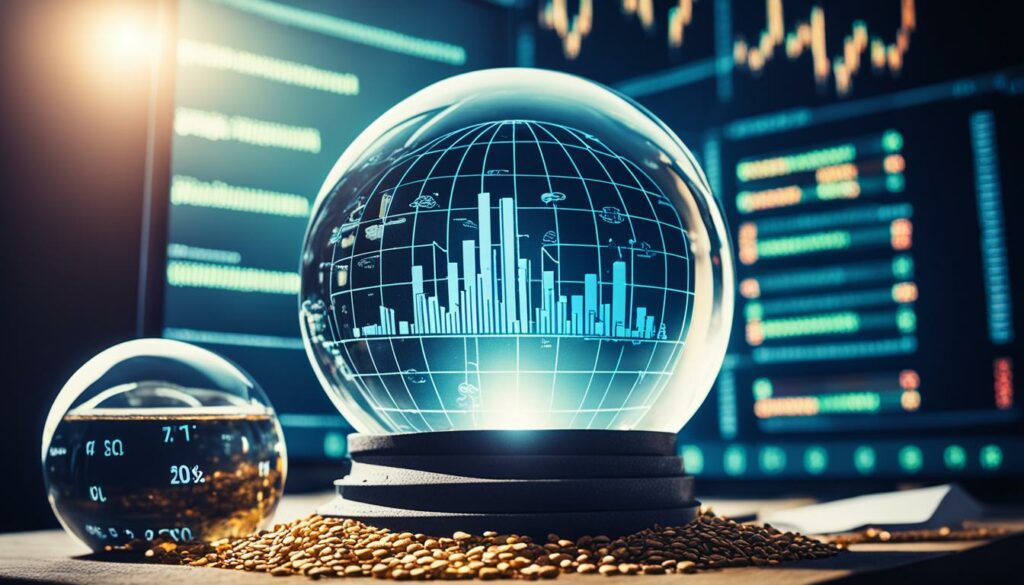
The relationship between supply, demand, and how they affect market prices cannot be ignored. At first, people thought about big economic factors when trying to predict prices. But now, we have predictive analytics for commodities. This new approach uses AI, ML, and DL to predict prices more accurately and reliably.
Older models, like econometric and basic ML, might not always get the predictions right. But, deep learning is changing this. It’s better at finding patterns in lots of data. This means it can offer new insights we didn’t have before.
Making the right price predictions is critical for both poor and rich countries. For poor countries that sell commodities, these predictions can change lives. And for rich countries, they help in making smart investment choices.
Using methods like Box-Jenkins and forecasting based on history has been very important too. They help predict what might happen next. These methods and newer tools like neural networks together make up the box of tricks for predicting prices.
The Chicago Board of Trade (CBOT) is a clear example of how commodity trading has evolved. It started back in 1850 and is now handling millions of contracts. These futures contracts are vital for managing price risks. They show how models are practically used in trading.
The blend of old and new ways for predicting prices using AI and ML has made big improvements. These models are not just for people looking to make money. They’re also helping to lessen the risks for those in the trading business.
Commodity trading’s key is understanding historical trends and seeing seasonal patterns. It’s also crucial to read economic indicators well. This helps forecast future trends better, allowing smarter decisions and planning. This process includes looking at data from days to years to spot patterns.
Studying past data is crucial in commodity data analysis. It helps find patterns that might show future price movements. Traders look at different past periods, like 3 to 100 days, to set up moving averages. This makes analysing historical commodity prices easier. They also draw trend lines to see price trends clearly.
Understanding seasonal trends is big in commodity trading. Looking at cycles helps spot patterns linked to supply and demand. This knowledge helps make smarter buying choices. It also improves trading strategies to fit market changes well.
Economic signals are crucial for predicting commodity prices. Things like GDP growth and global trends really matter. By using these economic indicators in commodity forecasting, traders can guess future prices. This lets them make plans that lower risks and use market chances.
| Key Element | Impact on Commodity Trends |
|---|---|
| Historical Data | Establishes baseline trends and patterns for future predictions. |
| Seasonal Trends | Reveals cyclic patterns influenced by supply and demand. |
| Economic Indicators | Influences market dynamics and price fluctuations. |
Looking at historical data, seasonal trends, and economic factors deeply is the heart of trading well. Doing detailed commodity data analysis keeps traders informed and prepared for the market.
Market conditions shape how commodity prices move, making trading exciting and challenging. To get how this works, we need to look at market changes, feelings, and rules. These things make big waves that traders need to steer around.
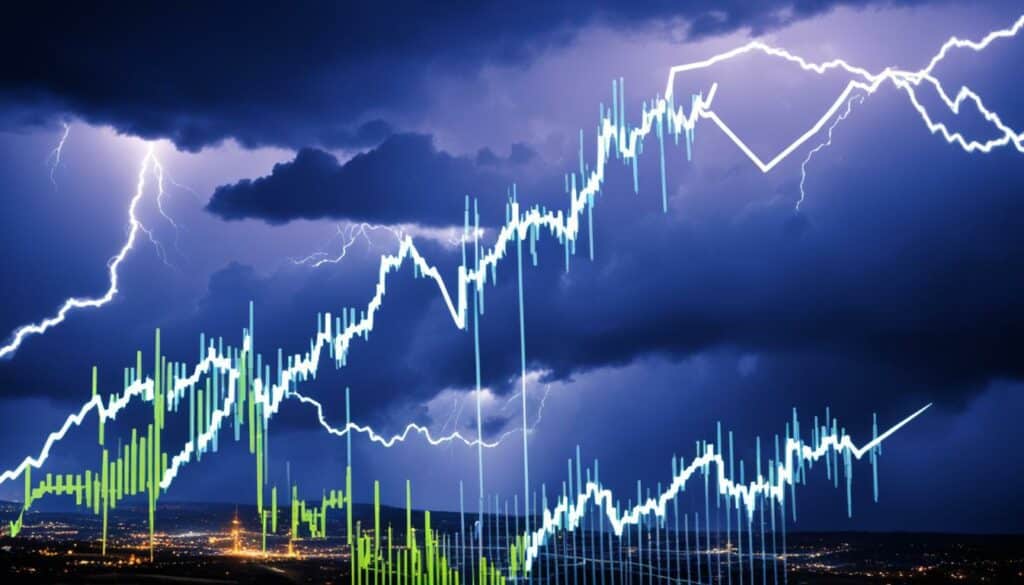
Market changes can be both good and bad. They can bring chances to make a lot of money but also risk losing. Since October 2023, commodity prices haven’t moved much, only 0.3% higher by February 2024. Even though there was an overall 0.8% rise in 2023, market changes are still a big deal.
Take gold, for example. Its price shot between $2,057 and $1,831 per ounce from May to October 2023. By March 2024, it was up to almost $2,200 per ounce again. This shows just how unexpected and hard to predict the market can be.
How people feel about the market can affect prices a lot. This feeling usually comes from the economy and big global events. The rise and fall of crude oil prices, for instance, hitting over $120 per barrel in 2022 but then lowering to over $80 per barrel in early 2024, show how sentiment can change quickly.
When the Federal Reserve chooses to keep interest rates high, it can make everyone feel unsure about the market. This can make prices change a lot, adding to the up-and-down nature of trading.
Laws play a huge part in market prices. Government rules really change how the market works. For example, some OPEC+ countries agreed to cut oil production until mid-2024. This was to keep oil prices high.
Also, investing in things like oil pipelines does not always mean prices have to go up. These changes in laws and government actions mean everyone in the market has to be ready to adapt.
| Year | Commodity Price Change | Gold Price ($/ounce) | Crude Oil Price ($/barrel) |
|---|---|---|---|
| 2023 | 0.8% | $2,057 (May) / $1,831 (Oct) | $80+ |
| 2022 | 4.8% | N/A | $120+ |
| 2021 | 12.1% | N/A | N/A |
By understanding and reacting to market changes, traders can stay strong and improve their game. Commodities markets always change, but being prepared can make all the difference.
Over the last twenty years, financial markets have changed a lot. This change is mainly because of repeated issues. Due to this, more people are turning to different investments like commodities. Creating strong strategies for commodity price prediction is now very important. Especially for people in the market who want to deal with the ups and downs wisely. Recently, the use of deep learning (DL) has got a lot of attention. It’s doing better than traditional machine learning (ML) in predicting the prices of commodities well.
Using data from the Bloomberg Commodity Index between January 2002 and December 2020 shows the big potential of DL methods. These methods are great at predicting commodity prices. Among them, the Long Short-Term Memory (LSTM) stands out. It’s especially good at forecasting prices in the areas of Bloomberg Livestock and Industrial Metals. Learning about these can help improve commodity trading insights and make predictions even better.
Traders who want to forecast commodity prices well must use many different strategies. They should:
Productively predicting commodity prices involves various elements. It’s important to remember that these markets change a lot. Combining scientific methods with personal insight allows for more detailed forecasting. The value of these markets has grown significantly since 2002. So, accurate forecasting has never been more critical.
Finding the right commodity price predictions is key for policymakers, investors, and those looking to minimize risks. Good predictions can affect inflation, macroeconomic health, and how to spread investments. We’ve moved from using simple economic data and models to employing AI and advanced DL technology.
At the University, the course AECN 436 by Fabio Mattos was all about that. It taught us the importance of both basic and technical analysis. These skills help in making real-world forecasts. They also make us better equipped to make trading decisions using in-depth analysis.
To wrap up, good strategies for predicting commodity prices need constant learning about the market, active use of forecasting tools, sourcing information from various places, and adjusting strategies regularly. This comprehensive approach helps traders stay ahead in the changing world of commodities.
Knowing the future price of goods is key in volatile markets. We use different tools to predict future prices. Time series, regression models, and AI are the key players here.
Time series digs through price history to find trends. This works well for commodities, where prices often change due to supply and demand. By looking at past prices, we can try to guess what comes next.
Regression helps us understand what affects prices. It looks at supply and demand, banking indicators, and emotions in the market. With this, we make models that might help us see into the future of prices.
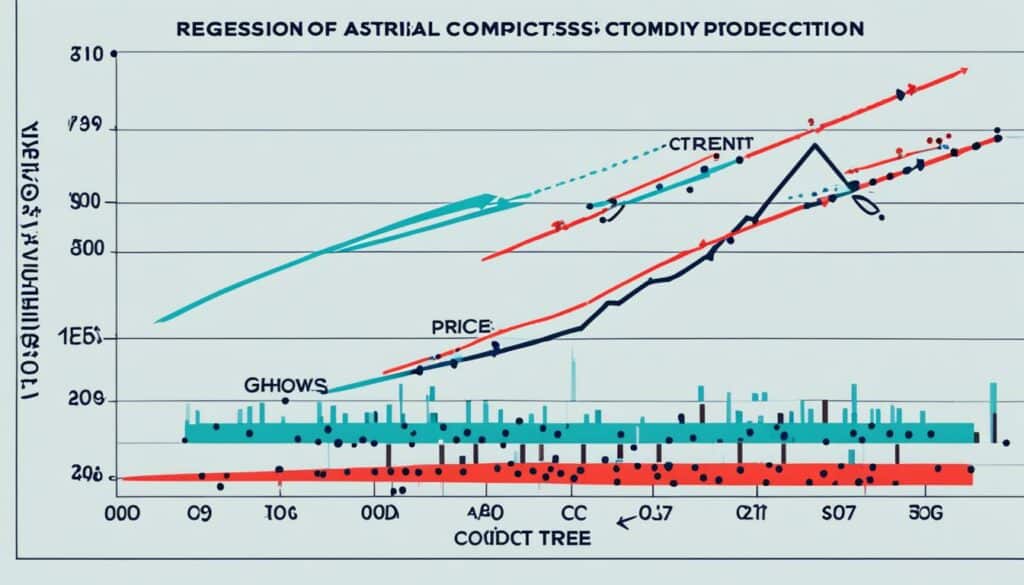
AI has completely changed how we guess future prices. Using deep learning, models can be really accurate. It’s a step forward from the more traditional ways of forecasting.
Combining these methods gives us a strong way to understand price changes. Knowing how each works makes us better at trading commodities.
| Technique | Strengths | Applications |
|---|---|---|
| Time Series Analysis | Identifies trends and patterns using historical data | Useful for commodities with historical price volatility |
| Regression Models | Analyzes relationships between prices and influencing factors | Effective in modelling supply and demand dynamics |
| AI and Machine Learning Techniques | Advanced prediction using AI-driven algorithms | Suitable for high volatility and complex market conditions |
It’s vital to use commodity data analysis for precise data-driven commodity forecasting. AI looks at history, world events, and weather to predict prices accurately.
Vesper, for example, foresaw the GDT Butter price drop in September, then rise. These forecasts give traders a big advantage, making their cost management smarter and margins higher.
AI goes beyond trends. It includes geopolitics and what consumers are doing. This comprehensive approach is clear in the Palm Oil and EU-28 Sugar forecasts. They’re key for smart buying and market health checks.
Here are important strategies for using these forecasts:
MarketView shows the benefit of combining 500+ data sources for deep analysis. It links different parts of the business for smooth function. It depends on sources like CME Group and Platts for crucial insights.
ICIS is a great example, with info on 143 markets. It helps users spot chances and improve strategies. The real key to forecast well in commodities is to use data smartly. It keeps you ahead in the competition.
Looking at production forecasts in commodities helps us make better buying choices. We can look at what’s coming and how prices might move. This way, we can adjust our plans to match the market better. Doing this helps us buy things at the best prices. And, it keeps us safer from sudden market changes that could hurt us.
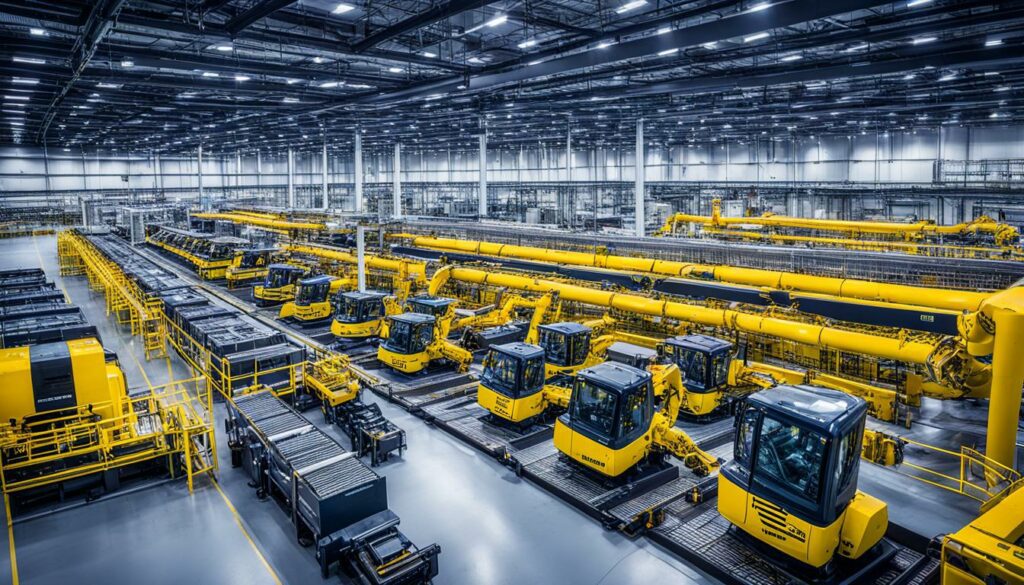
Knowing about production trends is key for smart buying in commodity markets. If we hear that more palm oil will be made, prices might drop. Then, we can buy it cheaper and maybe earn more when we sell it.
Choosing the right time to buy commodities needs good forecasts. AI studies data from the past, current events, and weather to predict. This helps us know the best times to buy. Doing so can make our buying plans much better.
Markets always change. That’s why it’s important to keep an eye on production forecasts in commodities. By keeping up with updates and changing our plans smartly, we can avoid big losses. This smart way lets us deal well with the changing markets. It helps in keeping our buying plans in line with what’s being made.
Below is a comparative analysis table of different commodities and their respective forecast impacts on purchasing decisions:
| Commodity | Forecast Data | Impact on Purchasing Decisions |
|---|---|---|
| Palm Oil | Increased Production Forecast | Delay purchases to benefit from price drops |
| Crude Oil | Decreased Production Forecast | Speed up purchases to avoid price increases |
| Corn | Stable Production Forecast | Regular purchasing strategy maintains stability |
Ending stock forecasts in commodities are key for future supply. They really shape strategic commodity planning. Knowing what stocks will be available helps businesses buy at the right time and secure good deals. This way, they can stay on top even when markets are up and down.
There are many things that help get these forecasts right. Things like what’s already in stock, what’s been ordered, and how things have changed over time. Using past trends to guess how much will be left is very helpful. With smart software, like at this site, managing stock becomes much easier.
When planning ahead, using a mix of forecasting methods really pays off. Combining things like trends, graphics, and expert opinions can give the best predictions. This saves money, keeps everyone happy, and makes the business run smoother. Mixing different types of data lets forecasters prepare for every possible situation.
Finding the right method to forecast depends on many things. What info is available, the kind of business you’re in, and what methods you know about. Big companies often look at lots of past info. New businesses might listen more to what’s happening now in the market. Whichever way, getting these forecasts right helps companies buy and sell wisely in the global market.
Commodity price forecasting is about guessing what prices will be in the future. It uses many ways like looking at old data and new AI methods. By doing this, traders can make better choices when buying and selling goods.
It’s important to guess prices as it lets businesses handle uncertain times better. They can make smart choices in buying and selling to get ahead in these changeable markets. Guessing prices right helps them jump in and out of markets at the best times.
AI changes the game by sifting through lots of data to find hidden clues. These smart forecasts help traders to plan better, lower their risks, and spot the best times to buy. It’s a key modern tool for those in the trading world.
Many things affect prices, like big global events, the weather, and how much people want a product. Knowing these factors well is key to guessing price trends and making wise decisions when trading.
Economists and data scientists use different methods to predict prices. They might use past performance or even current market signs to guess where prices are going. Each method gives them a different view on what might happen.
Models for guessing prices mix lots of economic signals and data from what people are doing. With advanced analysis tools, these models can tell what might happen in the future. They guide traders in making savvy moves.
Studying past data, recognising when prices tend to go up or down, and looking at economic signs is how analysts understand price trends. This deep look allows for more accurate predictions and smarter trading times.
Market changes and how people feel about trading, along with the rules that govern it, can swing prices a lot. Knowing these aspects is crucial for traders to stay strong in face of price swings and laws changes.
To guess prices right, keeping track of trends, using the best predictive tools, and checking many info sources is key. Also, being ready to tweak strategies as markets change is essential for success.
Experts use several techniques, like looking at price changes over time, making simple models, and using AI to spot patterns. These methods, combined, give a detailed guess on future prices.
By digging into market data, traders can find clues for making better sources and choices. This helps in spotting where supply and demand are going, cutting costs, and planning purchases better in the trading world.
Looking at what will be produced helps traders guess prices better. By using forecasts, like Vesper’s Malaysia’s Palm Oil, they can adjust when and how they buy. It means they can react quickly to production changes.
Forecasts about how much will be left in stock give a heads up about future supplies. This info is crucial for planning buys and deals, impacting how they price goods and think about global trading.